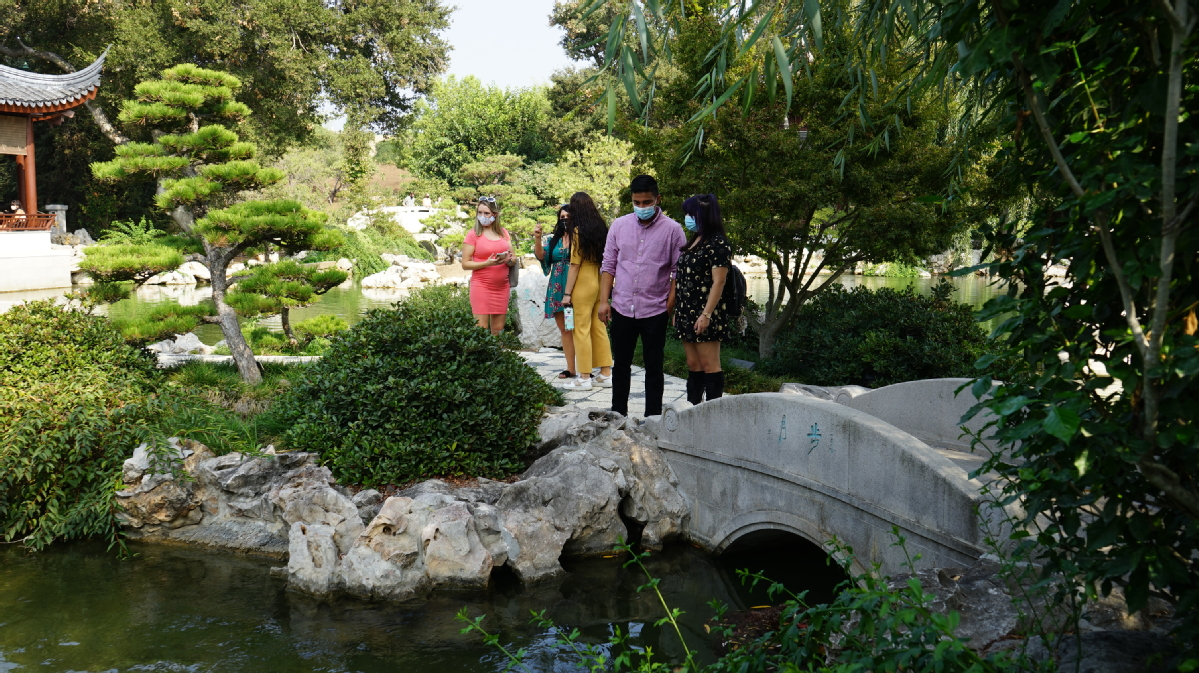 |
|
Liu Fang Yuan, also known as the Garden of Flowing Fragrance, in San Marino, Los Angeles County, California, United States, reopens to the public in October with 4.6 hectares of new landscape. [Photo/Xinhua] |
By immersing its visitors in arts and literature, Liu Fang Yuan, built by US and Chinese artisans, transcends international boundaries and bridges the cultural gaps between the two countries. Although it is situated thousands of kilometers from China, it also connects the Chinese diaspora with ancestors and rich culture back home.
After a postponement of nearly five months due to the pandemic, Liu Fang Yuan reopened to the public in October with 4.6 hectares of new landscape.
The additions include several pavilions and courtyards, a replica of a Ming Dynasty (1368-1644) scholar's studio, a restaurant, a complex of walled courtyards displaying miniature landscapes known as penjing, and a pavilion situated at the garden's highest point.
The expansion took the garden's total area to just over 6 hectares, making it one of the largest classical-style Chinese gardens in the world. When it first opened in 2008, the venue had eight pavilions and occupied more than 1.4 hectares.
Phillip E. Bloom, curator of the Chinese Garden and director of the Center for East Asian Garden Studies at the Huntington, said: "It's been 16 years of construction. Around 2000, we had a master plan made for the garden, but the idea for the venue goes back to the 1980s."
The initial aim was to create a collection of Chinese plants, particularly those found in gardens in the US that were originally cultivated from China, Bloom said.
"When I was a kid, we had peonies in our yard, and I probably just assumed that peonies were from the US or Europe, but of course they are Chinese," he said.
After research, the director of the Huntington's botanical gardens realized that plants alone were not sufficient to demonstrate the essence of a Chinese garden-a combination of pavilions, courtyards, water, rockeries, calligraphy and plants. As a result, he started talking to Chinese Americans in the area to learn about Chinese gardens, Bloom said.
Eventually, it was decided to model a garden on 16th and 17th century scholarly retreats in Suzhou, a city near Shanghai.
The decision was made partly because of the prominence of classical gardens in that city, but also because parallels were found between the Huntington and Suzhou gardens.